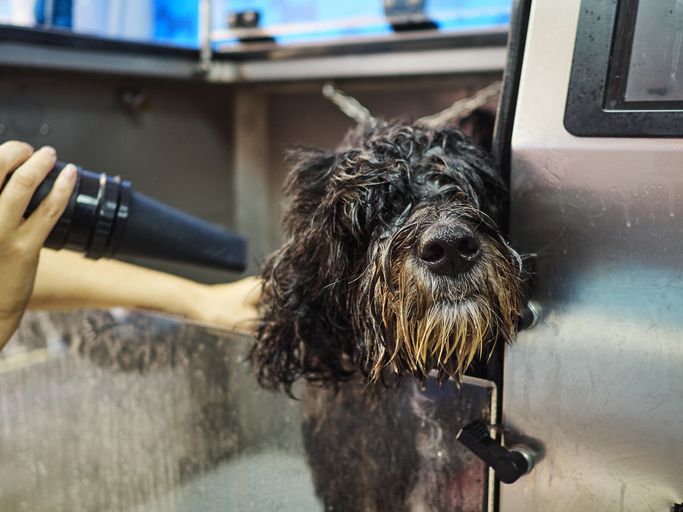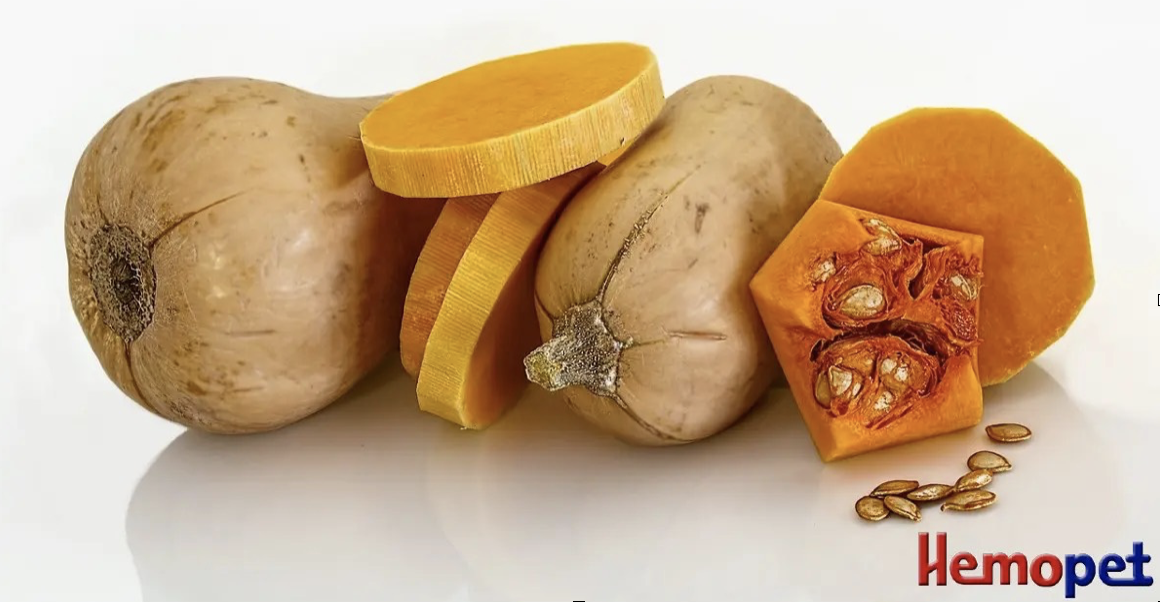 CJ Puotinen January 25, 2023 This is taken from Whole Dog Journal .....Visit them for some awesome articles or an online subscription. Well worth it! Don’t wait until your dog needs a bath to create a comfortable, relaxing routine for this important ritual. Plan ahead by organizing the products and equipment you’ll need, and if you’re new to dog bathing, rehearse the steps, which are:
What bath products do I need?The best dog shampoos and conditioners are made with gentle ingredients that remove dirt without irritating your dog’s skin. Depending on your dog’s coat, you may need a detangling spray, a rubber bathing brush for working shampoo through the coat, fast-drying towels, a hair dryer that dries dog hair quickly without feeling hot, and the right brush for your dog’s coat. Consult a groomer if you need help getting started. It’s important for the health of the dog’s skin that he’s dried thoroughly after a bath (especially for long or thick-coated dogs). To dry a dog thoroughly after a bath, groomers use special dryers that provide a cooler and more powerful jet of air than human hair dryers. The strong air flow forces the moisture away from the dog’s skin and out of his coat; the cooler air ensures that he doesn’t get overheated. If you use a human hair dryer on your dog, use it on the coolest setting possible. Photo by Siro Rodenas Cortes / Getty Images. Where to bathe your dogThe best place for your dog’s bath might be your sink, bathtub, walk-in shower, outdoor wading pool, or back yard. Your water supply should be lukewarm, not hot or cold. If you’re using a bathtub, be sure your dog can climb in and out, and place a rubber bathtub mat (or at the very least, a towel) in the tub to keep your dog’s feet from slipping. You’re probably going to get wet, so wear appropriate casual clothing. Use treats and encouragement to position your dog. Start with a dry brush on your dog’s coatBegin by brushing your dog’s coat to remove loose hair, burrs, sand, dried dirt, and other debris. If there are mats in your dog’s coat, save the brushing for later as a bath may loosen the matted hair. In that case, spray or apply a detangling product to the hair mats following label directions and then shampoo. Dilute your dog shampoo. We, humans, are fond of frothy bubbles, so we tend to over-soap our dogs. While that may look efficient, it’s better to use fewer bubbles and more water. Grooming experts recommend diluting equal parts water and shampoo to blends as dilute as 1 or 2 tablespoons shampoo in 2 cups water. The dilute solutions reach all parts of the coat quickly and rinse out faster and more thoroughly than full-strength shampoo. Dilute your conditioner, too. Step-by-step dog washingUse a gentle stream of water to thoroughly wet your dog’s coat. Keep shampoo out of your dog’s eyes and ears as you apply it from neck to tail, then gently massage the shampoo into every part of your dog’s coat. After that, rinse and rinse and rinse some more. Apply a diluted coat conditioner, if you’re using one, and rinse again. Use a finishing spray or other products as needed, then blot your dog’s coat with towels. If you have one, dry your dog with a dog blow dryer. Finish by brushing your dog’s hair while it’s still slightly damp. For more detailed instructions, see “Waterworks: Tips and Techniques forBathing Your Dog,” WDJ November 2014, and “When Can Puppies Take a Bath?”
0 Comments
 Butternut Squash as an Alternative to Pumpkin for Dog Anal Gland Expression October 21, 2022 / Nutrition / By Hemopet Anal gland (actually anal sac) expression is often demonstrated by dogs sitting and pulling (scooting) themselves across flooring or grass. The scooting is marveled at by children while adults are usually disgusted, but it is actually an act of distress for companion dogs. Canned pumpkin is frequently the “go to” healthy food topper for companion dog parents to help give dogs that may have trouble expressing their anal glands (anal sacs). The soluble fiber in pumpkin helps put pressure on the anal sacs to alleviate an impaction, and reduce or eliminate the scooting across the floor. It is a simple and easy solution. What might be even healthier? Now that it is harvest season for pumpkin, pumpkins from your local farmers market! Now, you are thinking to yourself about all of the seeds and mess of carving up a pumpkin might bring. We understand. So…we have another alternative! Butternut squash! In fact, it may be a good idea to switch up the source of soluble fiber sometimes to achieve the desired effects. With the growing popularity and now abundance of butternut squash, we noticed that one butternut squash was the same price as a can of pumpkin at a local farmers market. Just like pumpkin, butternut squash is also jam-packed with soluble fiber. However, a butternut squash is much easier and faster to work with because the seeds are minimal and concentrated in the bottom instead of the entire core like a pumpkin. Indeed, pre-cut butternut squash is usually readily available at grocery stores and cooperatives than pre-cut pumpkin, and is a good alternative. However, you are paying for someone else to cut it. So, how do you choose, cut up, and serve butternut squash to your companion dogs? It literally takes a few minutes. Choosing a Butternut Squash #1. You want it a darker shade of matte beige, not shiny beige. #2. If it has a few green patches, it is not ready yet for carving. However, you can let it ripen on your kitchen countertop or indoor window sill. #3. Tap it. If it sounds hollow, you are good to go. Carving a Butternut Squash #1. Lay the squash on its side and cut off the bottom and the top. Are you finding this particularly difficult or fear you might slice and dice your finger? Poke the squash with a fork and place it in the microwave for approximately 2 minutes to soften the rind. #2. Now grab your vegetable peeler. You can certainly use a vegetable peeler that is traditionally used for carrots, but a y-peeler is a better option as it covers more surface area with each swipe. #3. You can leave the squash on its side to peel, but we find it easier to stand it upright and peel with long downward strokes, and then getting the excess rind bits off laying on its side. #4. Cut it lengthwise. If you are finding this difficult as well, you can cheat and cut above the bulbous portion of the squash. Then, cut both halves lengthwise. #5. Scoop out the seeds. #6. Now slice the squash into bite-size pieces or so that it is easily freezable. Preparing Butternut Squash #1. Grab a steamer pot or a steamer and a pot. #2. Pour 1-2 inches of water into the pot. #3. Bring to a boil. #4. Place the cut pieces of squash into the steamer basket. #5. Gently boil 1-3 days worth of squash for approximately 12-15 minutes. If frozen, boil for 20-25 minutes. #6. Mash it with a fork while still warm. #7. Store leftovers in the refrigerator for up to 3 days. You probably have a lot of fresh squash leftover on your countertop. So, what to do with it? Freeze it! Freezing Butternut Squash Cookbooks or cooking websites will tell you to flash freeze, blanch and then freeze, or puree and then freeze. Flash freezing is the simplest. You simply lay out the individual pieces – making sure none are touching – on a cookie sheet and place it in the freezer overnight. Then, transfer it to a freezer-safe container or freezer-bag. However, flash freezing may be too involved because that would create another project: rearranging the entire freezer. The purpose of flash freezing is so the individual pieces do not stick together when you go to use them. It’s about creating convenience on the frontend instead of the backend. If you do not have the space or the time to rearrange your freezer to accommodate a cookie sheet for a few hours, we understand. You can simply toss the individual pieces into a freezer bag or freezer-safe container for later use. When you go to prepare them, simply break apart the serrated pieces with your hands or gently with a fork and pop them in the steamer basket. Serving Size for Companion Dogs Start off with a small amount for small dogs and work your way up to a tablespoon per day. For bigger dogs, work up to two tablespoons per day. Once the butternut squash pieces are soft and malleable after boiling, you can easily smoosh them into the measuring spoon. And with that…Bon Appetit! Thank you to Hemopet for this informative article! |

 RSS Feed
RSS Feed